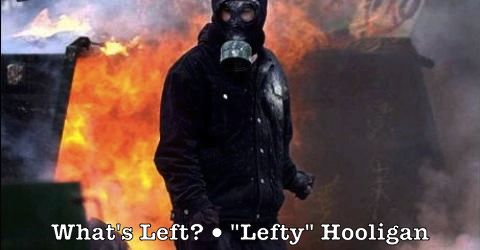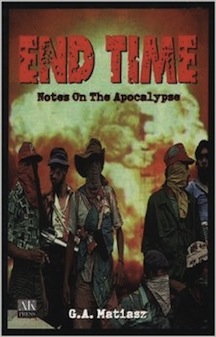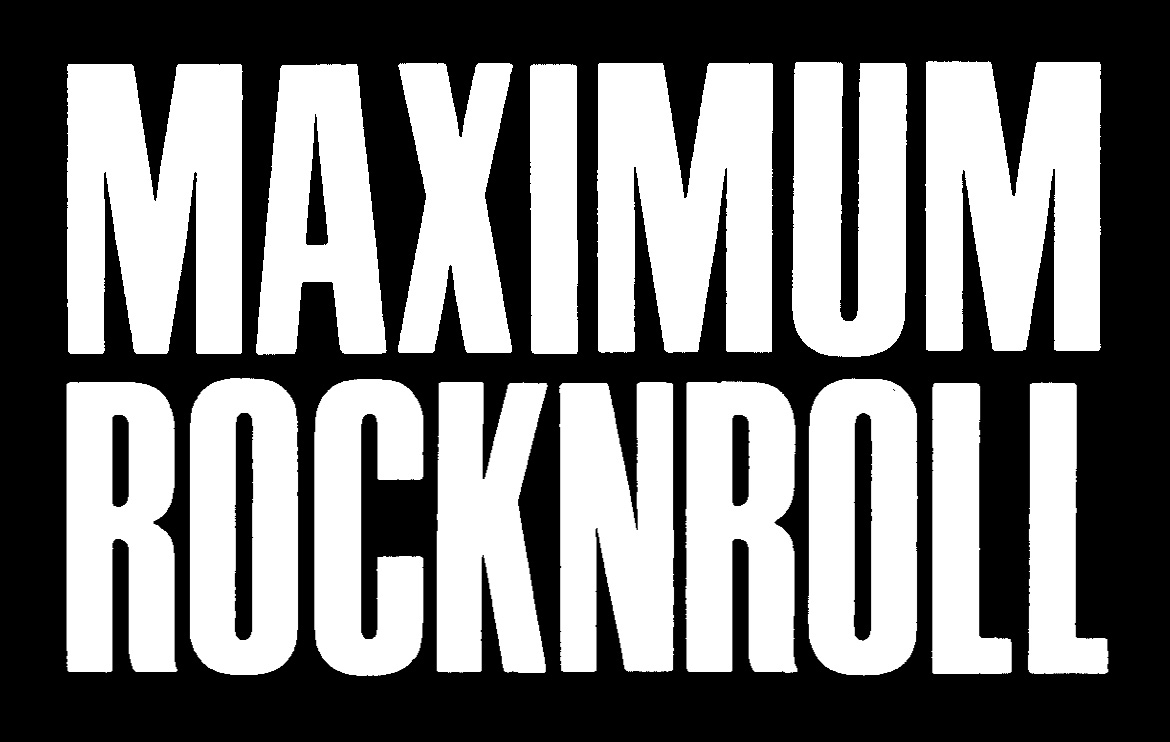
I fancy myself a “citizen of the world,” but I’m merely a denizen of these United States of America. As such I feel obliged to oppose US imperialism and seek to dismantle the American empire. But that doesn’t make me an “anti-imperialist.” To quote Gilles Dauvé: “I am against imperialism, be it French, British, US or Chinese. I am not an ‘anti-imperialist’, since that is a political position supporting national liberation movements opposed to imperialist powers.”
For me then, part of not being a dyed-in-the-wool vulgar Leninist anti-imperialist and opposing imperialism “objectively” everywhere is focusing primarily on my country’s imperialist exploitation and appropriation around the world. I really don’t spend much time and energy railing against, for instance, either Russian imperialism or Israeli imperialism.
Russia is a US rival and sometime enemy that has imperialized Georgia, Chechnya, Ukraine, etc., while Israel is a US ally and client state that has imperialized the West Bank and parts of Egypt, Jordan, Syria, and Lebanon. Those military and economic encroachments are only secondarily my concern as I am currently focused on US saber rattling in East Asia (Korea) and South America (Venezuela).
There can be extenuating circumstances of course. I am Polish by family origin so when Russia recently threatened Poland over the removal of WWII Soviet era statues I took notice. My wife is a Jewish “red diaper baby” and she has a consistent anti-Zionist take on Israel. But we don’t spend every minute of every hour of every day denouncing respectively Russian or Israeli imperialism.
What’s more, I suspect that my fellow American netizens who spend all their time and energy condemning Russian imperialism or Israeli imperialism have ulterior motives. In the case of Russia it’s Cold War anti-communism and in the case of Israel it’s old fashioned anti-semitism. Long associated with rightwing politics, anti-communism and anti-semitism are more and more products of the Left.
Anti-imperialism is one of those unifying principles common to Leftist organizations and movements. From the Black Panther Party’s 10-Point Program to more generic points of unity, an ideological laundry list is de rigueur for the Left. Classical anarchism remained largely aloof from this requirement until the rise of the New Left in the 1960s. The practice of formulating points of unity as a programmatic norm and organizing method eventually became part-and-parcel of anarchist organizations and movements generally as they incorporated elements of New Left and old Left politics, an argument post-left anarchists are fond of making. As for the ultraleft, we’ve tended to make each point in any list of basic positions a thorough treatise worthy of its own volume of Capital. Antifascism is yet another unifying Leftist principle.
We’d planned to go to Crissy Field to confront the Patriot Prayer fascists on August 26 when the whole Bay Area was mobilizing despite cancelled bus lines, locked down militarized neighborhoods, unnerving uncertainties, and real physical dangers. There was a lot of political pressure for the National Parks Department to cancel the permit, which didn’t happen, even as other similar provocations around the country were shut down. The overwhelming media coverage of the proposed event guaranteed that the Bay Area Left showed up in force on Saturday.
Other protest events had been planned nearby, such as the SF LovedUp Mobile Dance Counter-Rally just down the bay at Marina Green Park. And lots of folks thought the best strategy was to avoid Crissy Field altogether for symbolic anti-fash events elsewhere. Me, I think it’s always necessary to confront fascism directly. So when Patriot Prayer cancelled their rally the night before and it was clear Joey Gibson had flown the coop the morning of, I was relieved and elated, but also disappointed. Things had changed from directly confronting real live fascists to symbolically protesting the rise of fascism, and I’d done enough symbolic protesting during my last half century of leftist politics thank you. So while I was glad, I only briefly attended the largely celebratory demonstrations at Alamo Square and then the Castro, and I didn’t care to march down Market Street yet one more time. Truth be told, while I was happy San Francisco had repelled the fascists through our mobilization, the symbolic mass demonstrations that followed were a bit of a letdown.
Leave it to Berkeley to set the standard for directly confronting the fash, when a demonstration of 7,000 anti-fascist protesters marched on MLK/Civic Center Park, with 500 embedded black clad antifa overwhelming the police and taking over the park on Sunday, August 27.
I’d intended to demonstrate in San Francisco as an unaffiliated leftist against fascism, not as antifa. For one thing I’m 65 years old, take blood thinners, and have bad knees. I’d stopped the blood thinners days before in case I got hit upside the head by a rogue nazi. But I was there to demonstrate against, not to fight the fash, so I wasn’t going to be on the front lines. I admire antifa and their stated strategy to confront fascism everywhere with direct action. I post a lot of pro-antifa stuff on my facebook profile. But I also hold to a diversity of strategies (per Doug Henwood of The Nation), where “some of us are fighters, some of us organizers—and some of us like to write about history, theory, and the current conjuncture.” I was never good at the “boring hard slog of organizing” and I’m too old for “street-based politics.” So now I kibbitz from the sidelines and go to demonstrations and protest against fascism.
Notice I didn’t say I was antifascist. I have Gilles Dauvé’s reservations of liberal antifascism: “I am (and so is the proletariat) against fascism, be it in the form of Hitler or Le Pen. I am not an ‘anti-fascist’, since this is a political position regarding the fascist state or threat as a first and foremost enemy to be destroyed at all costs, i.e. siding with bourgeois democrats as a lesser evil, and postponing revolution until fascism is disposed of.” Antifa suffers from a similar political monomania, tempered only by it’s emphasis on direct action and it’s de facto anarchism.
And I have criticisms of antifa’s direct action and default anarchism as well. Militarily speaking the decentralized black bloc tactic might work well as cat-and-mouse with the cops, but it’s more like brutal gang warfare against alt.right paramilitary formations. It lacks the capacity to scale up to higher levels of organization, logistics, and mobility, so I think antifa needs to investigate other historic antifascist modes of self-defense such as militias and commando operations.
I have the usual ultraleft critique of anarchism, but for now I think that antifa’s implied goal of anarchism is so far removed from its tactics and strategy as to be useless. To understand my point, consider the goal of democratic socialism held by orthodox social democracy. To achieve that goal social democrats usually put forward parallel political party and labor union mass strategies out of which spring a myriad of tactics—education and propaganda, electioneering and organizing, shadow governments and mass strikes, etc. Rules of engagement are derived from one’s strategies and measures of success from the outcome of one’s tactics. By contrast, antifa has a single strategy—stop the fash—which produces limited tactics—education, doxxing, direct action. Strategy and tactics are so immediate and narrow as to have virtually no direct connection to any stated or implied goal of anarchism. Frankly, I don’t see how one leads to the other except for the usual @ cliché that antifa’s means and ends are identical.
I’m critical of anti-imperialism even while I’m against imperialism. I have criticisms of antifascism and antifa even while I’m against fascism. Similarly, I have problems with most anti-capitalist and anti-colonialist stances even while I’m against capitalism and colonialism. I like to think my political critiques are well-reasoned and not simply a product of my characteristic devil’s advocacy, my knee-jerk contrarianism expressed by Groucho Marx and the Ramones when they sang: “I’m against it!”
December 1, 2017
Categories: 43 Group, anarchism, Black Bloc, communism, diversity of tactics, fascism, imperialism, left communism, Leninism, Marxism, Marxism-Leninism, Politics, post-left anarchism, socialism, ultraleftism . Tags: against capitalism, against colonialism, against fascism, against imperialism, Alamo Square, alt.right, anarchist militias, anti-capitalism, anti-colonialism, anti-communism, anti-fascism, anti-fascist commando operations, anti-imperialism, anti-semitism, antifa, Bay Area Left, Berkeley, Black Bloc, Black Panther Party’s 10-Point Program, Capital, classical anarchism, Crissy Field, diversity of strategies, diversity of tactics, Gilles Dauvé, goals, Golden Gate National Park, imperialism, Israeli imperialism, Joey Gibson, left communism, MLK/Civic Center Park, New Left, old Left, Patriot Prayer, post-left anarchy, Russian imperialism, San Francisco, strategy, tactics, the Castro, ultraleft . Author: leftyhooligan . Comments: Leave a comment










